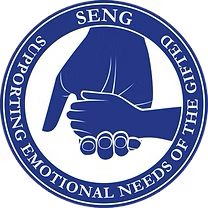Addiction and substance abuse still are common problems in most countries today, especially the young, and the gifted.
A person, at any age, can be influenced to take prohibited drugs, to overuse or misuse prescribed drugs and abuse other substances, too, such as alcohol. Teenagers by percentage are at greater risk of drug use and addiction compared to other age groups. This alarms authorities who call for more studies and research all over the world to determine the main causes of drug use and dependency among youths.
According to the report Monitoring the Future: National Results on Adolescent Drug Use 2013, alcohol, tobacco, and marijuana —in that order— were the most commonly abused drugs by adolescents. By the time of the 2018 report, more than 43 percent of 12th-grade students had already used marijuana, and more than 58 percent had already drank alcoholic beverages.
Use of illicit drugs aside from marijuana was lower—just under 19 percent of 12th-grade students—because of the greater risk of overdose and death.
A 2011 study conducted by James White of Cardiff University concluded that children with a higher IQ are more susceptible to use illegal drugs when they reach adulthood than those with average or lower intelligence level.
Based on their data samples, women with the highest IQ level tend to use marijuana and cocaine while men with the most elevated intelligence quotient are prone to using ecstasy and amphetamine.
Common Causes
Among the many factors that can lead the highly gifted and intelligent teens to drug addiction are:
1) External Influences. Depictions of drug use in the media—television, newspapers, magazines, social media sites, and others—mean teenagers may view substance abuse and illegal drugs as more common and acceptable. This may increase their interest in experimenting.
2) Parents. Many intelligent children grew up with parents who were dependent on substances, drinking alcohol, or smoking. Familiarity with these materials makes it more likely they will become users themselves.
3) Peer Pressure. Teens may be influenced by acquaintances or others in the same age groups. Peer pressure can take the form of bad information, dares, bragging, jokes, or bullying.
4) Social Behavioral Disturbances, Mental Health Issues, and Traumatic Experiences. Children or teens with a higher IQ may experience social difficulties, anxiety or depression, which can be causes or effects of drug dependency.
5) Social isolation. Gifted teens can struggle to achieve social acceptance within a peer culture that values conformity. Severe emotions might result in anxiety or depression and lead some to use drugs to cope. See Academic Giftedness and Alcohol Use in Early Adolescence.
6) Mental Health Issues. Teens with ADHD or other hereditary mental disorders are also prone to abusing drugs and alcohol; behavioral issues may be caused or exacerbated by substance use.
7) Trauma. Childhood or recent traumatic experiences can lead a teenager to develop a substance use disorder. Drugs may temporarily distract from painful memories, encouraging repeated use and dependency.
8) Dual Diagnosis. When addiction and a mental disorder co-occur (a dual diagnosis), relapse is likely unless both conditions are treated.
9) Short-Term Pleasure. Some youths seek an outlet to relieve pressure, anxiety, or frustration; drugs that induce euphoria can appear as an easy escape.
10) Novelty. Higher-IQ individuals may be more open to new experiences and risk assessments, which can include experimenting with substances.
11) Boredom. High-achieving teens may face classroom boredom and become vulnerable to substances that promise stimulation or relief.
Common Signs and Symptoms
Teenagers can gain access to drugs and alcohol at home or through friends. Keeping a watchful but not oppressive eye helps catch substance abuse early. Sudden mood changes, arguments, aggression or sensitivity can signal possible alcohol or drug problems.
Behavioral Symptoms of Substance Abuse
Knowing the warning signs of alcoholism and drug abuse is important. Any change in behavior or disposition might be a sign, including:
- Trouble focusing on schoolwork or other tasks
- Loss of interest in favorite hobbies
- New friends or no friends
- Atypically passive or aggressive behavior
- Ignoring responsibilities around the home, school, or work
- Money troubles
Physical Symptoms of Substance Abuse
There also may be physical changes associated with drug abuse and alcoholism, such as:
- Red eyes or skin
- Poor grooming (skincare, haircare, dress)
- Slurred speech
- Changes in sleeping behavior (more, less, different)
Preventive Measures and Helpful Tips
These signs don’t necessarily mean teens are addicted. The adolescent brain is still developing and sometimes shows poor judgment. If there is any family history of dependency, observe the teen’s behavior and consult a medical expert if you suspect abuse.
If teens show signs of abuse, get help immediately. The developing brain can be harmed by heavy drug use in the teens and 20s; early treatment may prevent full-blown addiction. The first step is to talk to the teen in a safe environment and seek outside help when needed. Social support, counseling, and school resources can reduce risk and promote recovery.
What Happens in Rehab
The deeper the addiction, the harder it is to quit. Withdrawal can be dangerous; appropriate rehab programs commonly offer:
- Medically supervised detoxification
- Staff trained in addiction medicine
- Cognitive behavioral therapy
- Spiritual counseling
- Peer support groups
- Nutritionists
- Exercise
- Followup care
Alcoholism can be especially detrimental to young lives and have long-lasting impacts. There are resources to help gifted teens get the assistance they need.
Conclusion
Teens can be influenced by many factors regardless of IQ: parents and peers, behavioral issues like boredom or isolation, mental health and trauma. These causes can produce behavioral and physical symptoms indicating dependence. Early monitoring, intervention, social support and tailored treatment improve outcomes.
References:
1. National Institute on Drug Abuse – Principles of Adolescent Substance Use Disorder Treatment.
3. Peairs, Kristen, et al. Academic Giftedness and Alcohol Use in Early Adolescence (2011).

